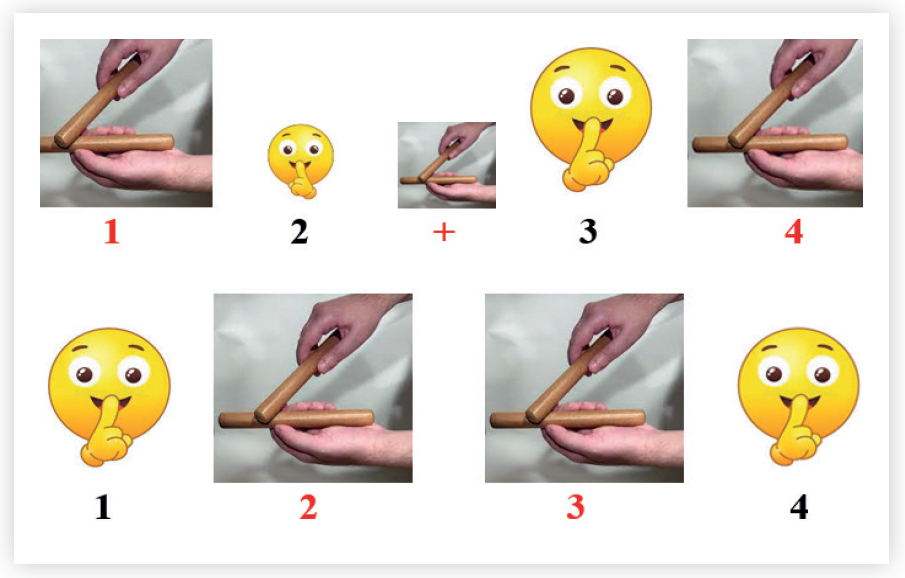
We hear Latin American rhythms everywhere: in the charts, on film soundtracks and especially on TV dancing competitions. Latin America covers not only a large geographical and political area but also a vast range of differing cultural and socioeconomic areas. The historical, social, religious and cultural backgrounds that have influenced the music of Latin America are varied. These include African, Spanish, Portuguese as well as the many differing cultural influences of the regions and their Indigenous peoples. Much of the music developed out of the struggle for freedom of expression of cultural and political ambitions. It is also worth noting that music does not adhere to political and geographic boundaries; many rhythms may be ‘traditional’ to several countries, with regional variations that may have originated elsewhere.
Tango from Argentina
Like many African rhythms, Latin American rhythms often share their name with the dance they accompany. This is true of the tango, which is believed to have originated in the late 1880s in the working-class areas of Buenos Aires, incorporating African and European musical influences.
To learn our tango, we will begin by playing Tango rhythm 1.
 Tango rhythm 1
Tango rhythm 1
First, ask the group to either clap or play on class percussion the first rhythm, reciting the words ‘Play the tango’.
When this has been established, move on to playing Tango rhythm 2, again reciting the words as you play.
 Tango rhythm 2
Tango rhythm 2
When the group can successfully play both rhythms, you can now put them together to complete the two bar phrase Tango rhythm 3. Traditional Latin American percussion instruments, such as the congas and bongos, have two differently pitched drumheads, one high and one low, so the group could now try playing the rhythm on two different pitches. If you have djembe drums, play the higher notes at the edge of the drum and the lower notes in the middle of the drum.
 Tango rhythm 3
Tango rhythm 3
Now try dividing the group in half, with one side playing the rhythm of the first bar and the other playing the second answering rhythm. You can also add some tonal interest by playing the first rhythm on wooden percussion instruments and the second rhythm on metal percussion.
Cumbia from Colombia
Cumbia is a rhythm and dance from Colombia, located in north-west South America. It began as a courtship dance practised among the Indigenous population on the Caribbean coasts of Colombia. It consists of three separate rhythms played on traditional drums.
The first rhythm is for the tambora drum. To play this, first play the higher note only on the side or shell of the drum with one drumstick (you can use any drum, such as a tom-tom from a drum-kit). When this has been mastered, add in the lower note on the drumskin or head with the other stick.
 Tambora drum rhythm 1
Tambora drum rhythm 1
Next, we can add in the rhythm for the second tambora drum.
 Tambora drum rhythm 2
Tambora drum rhythm 2
And finally, we can add in the rhythm for the Llamador drum (but again, you can use any drum). To play this, the player uses one stick and one bare hand. On the first and third beats, the player slaps their hand on the drumhead; on the second and fourth beats, the player hits the drumhead with a drumstick.
 Llamador drum rhythm
Llamador drum rhythm
Add all three rhythms together, and you have your complete cumbia beat!
Calypso from Trinidad
Calypso music developed in Trinidad and Tobago in the middle of the 19th century. It has west-African Kaiso musical influences as well as French creole flavours. Here, we will layer four rhythms together to create our calypso. Try playing each rhythm on a different-sounding instrument. I have used a separate fruit name to help to learn each beat.
 Calypso rhythm 1
Calypso rhythm 1 Calypso rhythm 2
Calypso rhythm 2 Calypso rhythm 3
Calypso rhythm 3 Calypso rhythm 4
Calypso rhythm 4
Practise each of these four beats separately before starting to layer one on top of the other, to build up your calypso.
Rumba from Cuba
Cuban rumba music is derived from a mixture of African-and Spanish-influenced song and dance. We will begin with the part for the two pitches on bongo, conga or djembe drums. Again, it will help if you ask pupils to recite the words when learning the rhythms.
 Rumba drum rhythm
Rumba drum rhythm
For our rumba, rather than adding more drums, we will build up a Latin American class percussion backing featuring cowbells, maracas and claves. Add in each part in turn on top of your rumba drum rhythm.
 Rumba cowbell rhythm
Rumba cowbell rhythm Rumba maracas rhythm
Rumba maracas rhythm Rumba claves rhythm
Rumba claves rhythm Rumba claves rhythm notated graphically. Images/symbols for quaver beats are half the size of those for crotchet beats. Performers play on the beats in red font.
Rumba claves rhythm notated graphically. Images/symbols for quaver beats are half the size of those for crotchet beats. Performers play on the beats in red font.
I hope you enjoyed our rhythmic road trip around Latin America! There are plenty more rhythms for you and your pupils to discover on the musical highway.








